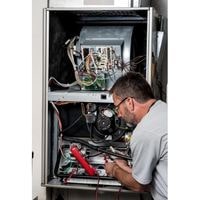Payne furnace troubleshooting. Payne is the ideal company for furnaces. It prides itself on providing its clients with not only the energy-efficient products they need but also exceptional customer service no matter when it may come in handy.
This aspect of their business philosophy is important to highlight because many clients are never truly certain if they are purchasing a well-made product made out of durable materials,
or if they’re just throwing money away with something that ultimately won’t get the job done correctly from day one.
If clients have questions about how well a particular model will work for them, this is where Payne shines in offering assistance amongst other things so as to make sure its clients can trust that their purchase will last for quite some time.
Payne furnace troubleshooting

If you’re looking to fix your Payne Furnace, check out these next tips on how your model of furnace works and what to do if it’s not heating properly.
We’ll show you troubleshooting techniques, provide safety warnings, and read out error codes as well.
The furnace is not heating
When you ignite a gas burner with an igniter, the igniter glows bright orange and heats up very quickly. If it fails or cracks, the furnace won’t heat. First, remove the igniter and inspect it for cracks.
If there are no cracks, use a multimeter to test continuity from end to end. If continuity is not present, replace it. Flame sensors monitor the burner to determine whether or not it is burning.
Dirty gas burns can interfere with this functionality causing inaccurate results; clean burners can conserve energy but unreliable flame detection can cause dangerous situations to develop since
heat isn’t being produced when needed in such a case you’ll opt for a cost-effective replacement instead of unpleasant reconstructions.
Pyne Furnace starts, then stops
Flame sensors monitor the burner to determine if a flame is present. It may fail to detect a flame if the flame sensor is defective.
To prevent your furnace from overheating, the control board will cut power to the gas valve if it does not detect a flame.
Often times if dirt buildup occurs on the sensor, it won’t be able to detect flames properly and will require maintenance.
Cleaning could be all that is needed so try cleaning that area with a dry cloth first if you notice no flames inside your furnace. If that doesn’t work, replace the old one using the instructions provided in your manual.
Payne Furnace blower won’t run
Air flows into the home through the return vent, past the heat exchanger, and then out of the house through the supply vent. First, make sure that power is getting to the blower motor.
If power is getting to the blower motor but the motor does not run, you may need to replace it. If the blower fan spins but does not blow air, check to see if it is blocked somewhere along its path.
Check for obstructions in both your inside and outside vents as well as around where your venting meets your furnace or air handler. The blower motor needs to be replaced if none of these are blocked.
Payne Furnace blower runs continuously
When the furnace blower motor is running, and it should be off, this is a sign that the control board isn’t regulating the voltage properly.
If you take out one of the relays on the control board while they are in use, they will send too much voltage to that component and cause it to work improperly. If the control board is at fault, replace it.
Payne Furnace makes a lot of noise
The blower wheel blows hot air out of the furnace to warm up your home. The blower hub holds the end of the motor where it turns,
so it’s important that when everything is in place, you can count on the blower working smoothly and efficiently.
The hub screws into place onto a shaft. Make sure there’s not too much space for unwanted wobbling between any parts. If it does, then tighten down or replace it altogether.
Next, examine the blower wheel closely for any visual damage from small dents all the way up to cracks and splits which could mean trouble if left untreated.
One more thing to pay attention to is any discoloration you might notice where rust may be lurking. Be sure to pick one up before leaving the store if you need a replacement.
Related Guides
